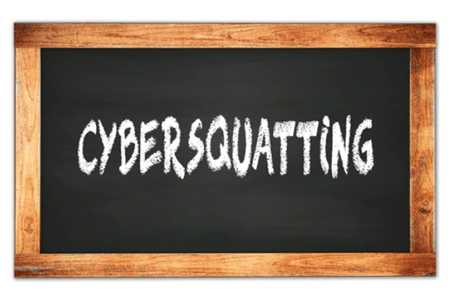Currently, semiconductors act as the foundation for advancements in the technological field such as smartphone…
Regulating Digital Freedoms: A Constitutional Analysis of India’s New IT Rules
INTRODUCTION
OTT service is relatively new in influencing the consumption patterns of the content in India and elsewhere in the world. However, there is no ignoring the fact that the Indian government has adopted new IT rules that were targeted at these platforms with a view to governing the social media platforms and ensure they fall in place legally to tackle the emerging concerns. However, these rules provide some advantages, for example, offering content ratings that will help viewers to make a choice, but they provoked quite a heated debate, especially regarding the violation of the Constitution.
Turning to the risks of the new IT rules, this paper focuses on the constitutional dilemmas. In the wake of these rules, especially in connection with a case regarding the web series named ‘Tandav’ that had earlier recently streamed on Amazon Prime, the Supreme Court itself explained significant lacunae regarding their applicability and enforcement and mechanisms. The Court along with the SG running the government, brought out the fact that these rules as of now do not have enough provisions with regard to the regulation of the content and punishment of offenders.
Also, the rules infringe with other rights such as equal rights as enshrined under article 14 of the Indian constitution, right to free speech and expression under article 19(1)(a) of the same constitution. Filtering the social media intermediaries, and differentiating the online new portals and the print media have been criticized as arbitrary, for the legal actions have elicited legal actions from many significant news-placing organizations. Besides, any monitoring of content sharing platforms to meet the traceability requirement for identifying the first uploader of unlawful content infringes on privacy rights garnished by the Supreme Court as enshrined within the Justice K. S. Puttaswamy (Retd.) & Ors v Union of India & Ors case.
The aim of this analysis is to unpack these constitutional questions which asks how this new regime of IT rules that is ostensibly regulating the digital space, is threatening the constitutional governance and the rule of law in India. The paper also explores the question on how these rules fit in the current social construct, more so concerning the balance between having rules to govern the use of social media and the rights of the users in the period of social media.
NEGATIVE ASPECTS VIS-À-VIS CONSTITUTIONAL ISSUES
Apart from these positive aspects, there are some underlying intricacies in the rules that it fails to address. The Supreme Court, while passing an order in the so-called ‘Tandav web series case,’ expressed its disappointment and dissatisfaction with the new IT rules.[i] The Supreme court seat headed by Justice Ashok Bhushan likewise caused to notice the way that the standards are simply rules and need compelling guideline for screening and furthermore don’t accommodate suitable activity against those people who abuse them.[ii] Solicitor General of India, Tushar Mehta, responded by agreeing to the remarks made by the Hon’ble Apex Court.[iii]
On wherein one hand, the appraisals will help watchers settle on an educated decision, however what might be said about the watcher who keeps on watching a series or show regardless of the notice? Would he be able to in any case enlist a complaint under this instrument? The principles don’t determine the grounds on which grumblings can be enrolled against OTT platforms. Taking into consideration the diverse viewers and their sensibilities, there will be a multitude of complaints.
Nowadays, there is a practice prevalent in society to download or get access to the content with the help of pirated sites, tor browser, and social media – Telegram is one of the most prominent ones.[iv] The rules fail to answer what if the children download and consume adult content or the content not specified for them from these sites. For instance, even after the Central Government banned nearly 3500 porn sites, India is still the world’s third-largest porn consumer.[v] In a similar way, these rules won’t serve the purpose unless any concrete mechanism is laid down to stop children from accessing the content not created for them.

In relation to intermediaries, the Part II of the rules create separate classes of ‘social media intermediaries’ and ‘significant social media intermediaries’ that are to be determined by the government. It would grant wide discretionary power to the government in determining which social media intermediary will be exposed to what type of norms. This arbitrary classification within the same group of companies violates the right to equality enshrined under Article 14 of the Constitution of India.[vi] Moreover, the Apex Court in L.I.C. of India vs. Consumer Education and Research Centre,[vii] stated that ‘the doctrine of classification is only a subsidiary rule evolved by the courts to give practical content to the doctrine of equality, over-emphasis on the doctrine of classification or anxious or sustained attempt to discover some basis for classification may gradually and imperceptibly erode the profound potency of the glorious content of equity enshrined in Art. 14 of the Constitution.’[viii]
The rules also distinguish between online news portals and print media news, which is also an irrational classification of similar entities, thereby violating Article 14 of the Indian Constitution. Online News Portals will be subjected to the same regulations so as to be followed by social media intermediaries, subsequently to similar grievance redressal mechanisms, which provide enough powers to the government to delete, modify, and block content as well as ask for a compelled apology, thereby resulting in violation of Article 19(1)(a) – freedom of speech and expression and Article 19(1)(g) – freedom to practice any trade and profession enjoyed by the news media.[ix] Owing to these very issues, subsequent petitions were filed by different news media portals, including The Wire, Quint, and Live Law.[x] India’s largest News Agency – The Press Trust of India (PTI), even challenged the same stating the new rules allow the government to virtually dictate content to digital news portals, and squarely violate media freedom.[xi]
Further, the identification of first originator of any unlawful information violates the right to privacy declared as a fundamental right under Article 21 of the Constitution of India by the Apex Court in Justice K.S. Puttuswamy (Retd.) vs. Union of India.[xii] Owing to the same issues, WhatsApp also filed privacy lawsuit against these rules.[xiii] According to WhatsApp, the traceability clause would force private companies to collect who-said-what and who-shared-what for billions of messages sent each day to facilitate law enforcement agencies.[xiv] This way, even the person who has not created the content, shared it out of concern, or check its accuracy could get caught for investigation for sharing the same if the content becomes problematic in the eyes of the government in the future. It would act as a deterrence for people even in their privacy settings from sharing any content or information further, thereby violating their freedom of speech and expression (Article 19(1)(a)) and right to privacy (Article 21).
Moreover, the rules are mere guidelines rather than in the form of legislation backed by the consent of the Indian Legislators. If the OTT platforms would have governed at par with theatrical releases and regulated by CBFC, then it would have been a much cumbersome and time-consuming process. Consequently, the government came up with these “soft-touch regulatory architecture rules” that provide it legal and informal methods to monitor and regulate these platforms more closely.
Furthermore, the rules are in the form of self-regulation but the underlying clauses on which this mechanism thrives provides enormous power to the government. For instance, the rules tie up the mechanism with Section 69A of the IT Act.[xv] Thus, providing an overriding power to the government to step in and block the content. The concerned section also provides for imprisonment up to seven years in any contravention to the orders of the governments,[xvi] thereby also acting as deterrence for content makers violating their artistic freedoms.
CONCLUSION
The article was an endeavour by the authors to put forth various lacunas present in the recently notified IT Rules 2021. It also gave some recommendations and suggestions that must be taken care of, to chalk them out. Although the suggestions and recommendations provided are not exhaustive in nature, they might play a crucial role in resolving most of the issues that intermediaries, OTT platforms and their consumers are likely to face. The instances elucidated and the views of the Apex Court while hearing plea on Tandav that ‘few platforms show pornographic content at times and there should be some mechanism to regulate them’[xvii] are evident enough to showcase that the OTT Regulation is need of the hour. These rules backed with concrete and wholesome legislation passed by the Parliament of India to deal with intermediaries and OTT platforms shall act as a panacea in resolving the mushrooming disputes.
The IT Rules is a shift in governing the social media and content in Indian context which has emerged that Indian government aims to have a better control on the digital media which is growing at a very fast pace. As something that purports to deal with matters of content regulation, misinformation and accountability, these rules have been decried as posing serious constitutional questions. The labeling of some social media intermediaries as ‘prejudicial’ or ‘harmful’, invasion of privacy, freedom of speech and expression have concerns that should not be overlooked.
This has been well evidenced by the judiciary’s response especially in the now famous ‘Tandav’ web series case which reveals how inept the current legal regime really is. Lack of clarity on how these will be enforced, possibilities of governments overstretching their power on the pretext of enforcing these rules, and most importantly the absence of a law backing these rules all this makes these rules a real threat to the tenets of individual freedom and democracy.
Therefore, in this modern and dynamic social media space, it is irrelevant for the various mechanisms of regulatory response to be sound and much more important that which is constitutional. The approach needs to be somewhat different but still achieve a reasonable protection of the public interest as well as the citizens’ basic rights. While India struggles with the question of how to regulate content, it’s all the more important now to have policies that are transparent and constitutionally correct. These rules need to be reviewed by the government with regard to all the issues arising from different stakeholders to ensure that the regulation of the digital platforms should not supersede the constitutional rights of the citizens.
Author: Kaustubh Kumar, a student at Presidency University, Bangalore, in case of any queries please contact/write back to us via email to chhavi@khuranaandkhurana.com or at IIPRD.
REFERENCES
[i] Prabhjote Gill, Supreme Court challenges India’s new rules for governing Netflix, Amazon Prime Video and other OTTs — no ‘appropriate action’ listed against those who violate regulations (March 5, 2021, 2:46 PM), Business Insider, https://www.businessinsider.in/policy/news/sc-challenges-new-rules-for-netflix-amazon-prime-video-disney- hotstar-by-indian-government/articleshow/81346798.cms.
[ii] Krishnadas Rajagopal, Supreme Court says new rules to regulate OTT platforms lack teeth (March 05, 2021, 11:28 PM), The Hindu, https://www.thehindu.com/news/national/sc-says-new-rules-to-regulate-ott-platforms-lack-teeth/article33995501.ece.
[iii] Samanwaya Rautray, Centre promises to tighten new digital media rules after Supreme Court says they lack teeth (March 06, 2021, 07:21 AM), The Economic Times, https://economictimes.indiatimes.com/news/economy/policy/centre-promises-to-tighten-new-digital-media-rules-after-supreme-court-says-they-lack-teeth/articleshow/81359441.cms?from=mdr.
[iv] Yasmin Ahmed, Move over torrents, Indians now use Telegram to pirate movies and TV shows (September 16, 2020, 03:47 PM), India Today, https://www.indiatoday.in/technology/news/story/move-over-torrents-indians-now-use-telegram-to-pirate-movies-and-tv-shows-1722374-2020-09-16.
[v] TV Ramchandran, IT Rules 2021 – Over the top? (April 04, 2021), The Hindu Business Line, https://www.thehindubusinessline.com/opinion/it-rules-2021-over-the-top/article34238342.ece
[vi] Constitution of India, 1950, art. 14.
[vii] L.I.C. of India v. Consumer Education and Research Centre, AIR 1995 SC 1811, 1822 : (1995) 5 SCC 482
[viii] Ibid.
[ix] Constitution of India, 1950, art. 19(1)(a), 19(1)(g).
[x] Delhi HC Issues Notice to Centre on The Quint’s Petition Against New IT Rules (March 19, 2021), The Wire, https://thewire.in/media/delhi-hc-issues-notice-to-centre-on-the-quints-petition-against-new-it-rules.
[xi] ‘Violative of Constitution’: PTI Challenges New IT Rules in Delhi HC (July 08, 2021, 01:00 PM), The Quint, https://www.thequint.com/tech-and-auto/violative-of-constitution-pti-moves-delhi-hc-on-new-it-rules.
[xii] K.S. Puttaswamy (Privacy-9J.) v. Union of India, (2017) 10 SCC 1
[xiii] Nandagopal Rajan, WhatsApp moves Delhi HC against traceability clause in IT rules, calls it is unconstitutional (May 26, 2021, 02:30:41 PM), The Indian Express, https://indianexpress.com/article/technology/tech-news-technology/whatsapp-moves-delhi-high-court-over-traceability-clause-social-media-rules-7330558/.
[xiv] Nupur Thapliyal, Whatsapp Moves Delhi High Court Challenging Traceability Clause Under New IT Rules As Being Violative Of Right To Privacy (May 26, 2021, 04:48 AM), Live Law, https://www.livelaw.in/top-stories/whatsapp-moves-delhi-high-court-challenging-traceability-clause-as-being-violative-of-right-to-privacy-174704.
[xv] Information Technology Act, 2000, § 69A.
[xvi] Information Technology Act, 2000, § 69A(3).
[xvii] A few OTT platforms show pornographic content, there should be some screening of such shows: SC (March 04, 2021, 02:15 PM), The New Indian Express, https://www.newindianexpress.com/nation/2021/mar/04/a-few-ott-platforms-show-pornographic-content-there-should-be-some-screening-of-such-shows-sc-2272096.html.



